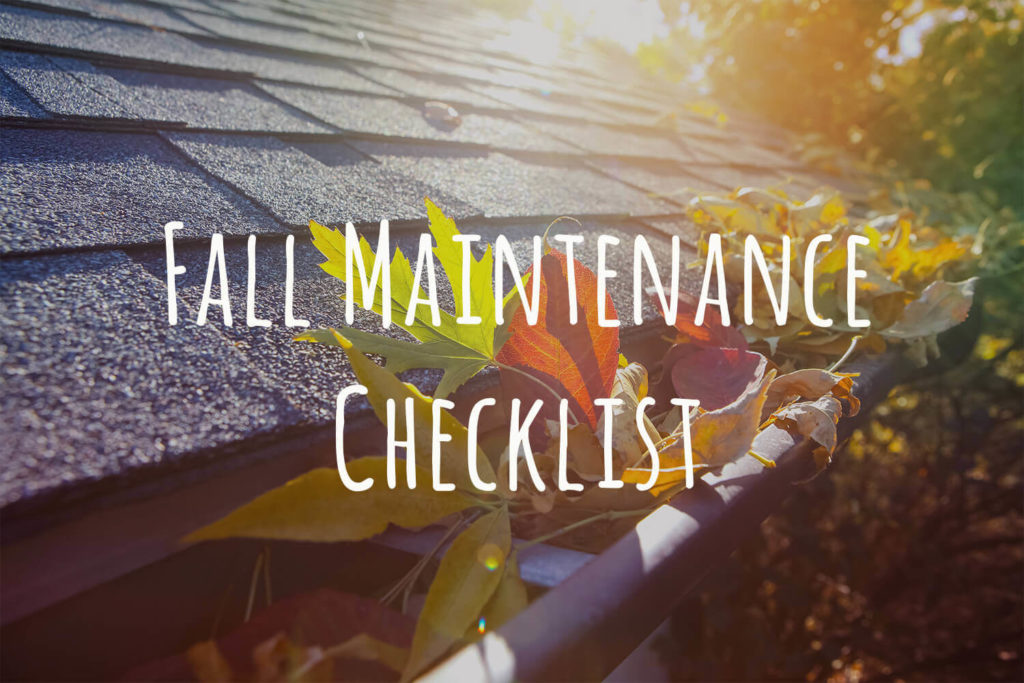Preparing your home for winter
November 10, 2016 Home Maintenance

With every season change it is important to prepare your home to keep it in the best condition. Simple changes can reduce heating cost and spring macitence. Keep Old Man Winter at bay with these simple tips.
Windows and Doors
- Check all the weatherstripping around windows and door frames for leaks to prevent heat loss. Replace weatherstripping, if necessary.
- Replace all screen doors with storm doors.
- Replace all window screens with storm windows.
- Examine wooden window frames for signs of rot or decay. Repair or replace framing to maintain structural integrity.
- Check for drafts around windows and doors. Caulk inside and out, where necessary, to keep heat from escaping.
Lawn, Garden, and Deck
- Trim overgrown branches back from the house and electrical wires to prevent iced-over or wind-swept branches from causing property damage or a power problem.
- Aerate the lawn, reseed, and apply a winterizing fertilizer to promote deep-root growth come spring.
- Ensure rain or snow drains away from the house to avoid foundation problems. The dirt grade — around the exterior of your home — should slope away from the house. Add extra dirt to low areas, as necessary.
- Clean and dry patio furniture. Cover with a heavy tarp or store inside a shed or garage to protect it from the elements.
Clean leaves, dirt, and pine needles between the boards of wooden decks to thwart mold and mildew growth.
- Clean soil from planters. Bring pots made of clay or other fragile materials indoors. Because terra cotta pots can swell and crack, lay them on their sides in a wood carton.
- Dig up flower bulbs, brush off soil, and label. Store bulbs in a bag or box with peat moss in a cool, dry place for spring replanting.
- Remove any attached hoses and store them away for the winter to prevent cracks, preserve their shapes, and prolong their life. Wrap outside faucets with covers to prevent water damage.
- Shut off exterior faucets. Drain water from outdoor pipes, valves, and sprinkler heads to protect against pipe bursts.
- Inspect decks for splintering, decay, or insect damage and treat, if needed, to prevent further deterioration over the winter.
- Clean leaves, dirt, and pine needles between the boards of wooden decks to thwart mold and mildew growth.
- Inspect outdoor lighting around the property. Good illumination will help minimize the chance of accidents on icy walkways at night.
- Check handrails on exterior stairs to make sure they’re well secured.
Tools and Machinery
- Bring all seasonal tools inside and spray them with a coating of lightweight oil to prevent rust.
- Weatherize your lawn mower by cleaning off mud, leaves, grass, and debris.
- Move your snow blower and shovels to the front of the garage or shed for easy access.
- Make sure you have an ample supply of ice melt or sand on hand for steps, walkways, and the driveway.

Heating, Ventilating, and Air Conditioning
- Inspect the firebox and flue system to ensure that they’re clean of any soot or creosote and that there aren’t any cracks or voids that could cause a fire hazard.
- Check fireplace for drafts. If it’s cold despite the damper being closed, the damper itself may be warped, worn, or rusted. Consider installing a Chimney Balloon into the flue to air seal the area tightly.
- Clean or replace the air filter in your furnace for maximum efficiency and improved indoor air quality.
- Clean your whole house humidifier and replace the evaporator pad.
- Bleed valves on any hot-water radiators to increase heating efficiency by releasing air that may be trapped inside.
- Check that smoke alarms and carbon monoxide detectors are in working order.
- Remove air conditioners from windows or cover them with insulated liners, to prevent drafts.
- If you have an older thermostat, replace it with a programmable unit to save on heating costs.
- Make sure fans are switched to the reverse or clockwise position, which will blow warm air down to the floor for enhanced energy efficiency and comfort.
Gutters, Roof, and Drains
- Check for missing, damaged or warped shingles and replace, as necessary before you get stuck with a leak.
- Check for deteriorated flashing at the chimney, walls, and skylights and around vent pipes. Seal joints where water could penetrate, using roofing cement and a caulking gun.
- Check the gutters and downspouts for proper fastening, and re-secure if loose or sagging. The weight of snow and ice can pull gutters off the house.
- Clean gutters of any debris. Make sure downspouts extend away from the house by at least 5 feet to prevent flooding of the foundation and water damage from snowmelt.
- Clean leaves and debris from courtyard and pool storm drains to prevent blockages.
Congratulations you are officially ready for winter.
Blog Search
Topics
- Achat (108)
- Buying (127)
- For Rent (10)
- Fundraiser (2)
- Giveaways (6)
- Holidays (11)
- Home Maintenance (29)
- loué (6)
- Marché (47)
- Market (83)
- Mortgage (4)
- New Listing (8)
- Non classifié(e) (33)
- Renovations (3)
- Selling (27)
- Uncategorized (32)
- Vente (20)

